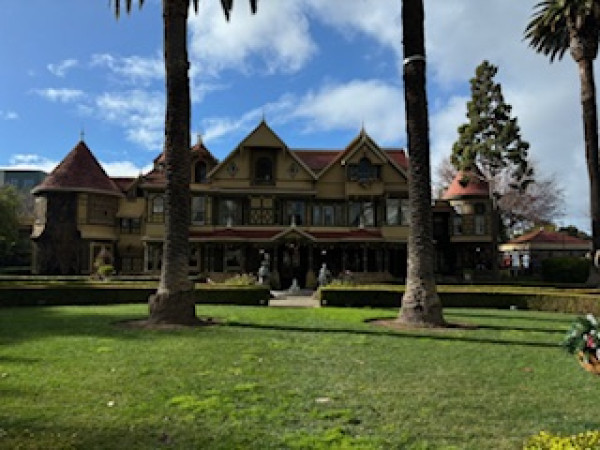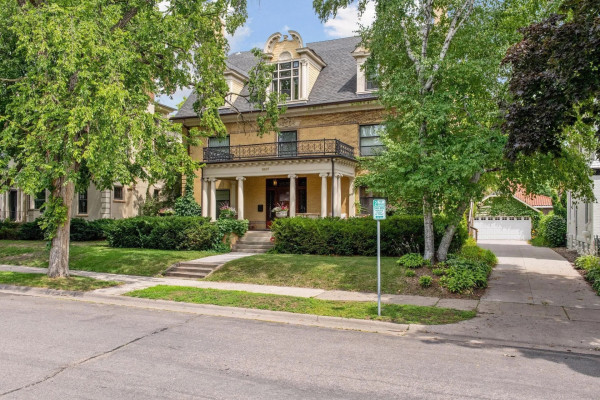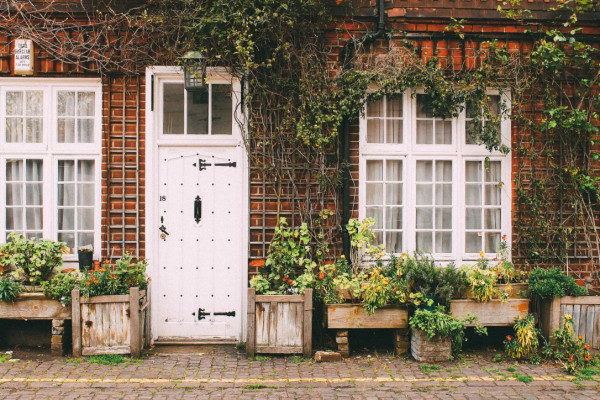Cracking the code of home history: A free resource list to uncover Your home's past
Want to learn more about your home's history? Check out our insider tips and tricks to get the most out of your search.
June 6, 2023
Library Resources for Home Research
When it comes to researching the history of your home, libraries can be a treasure trove of information. They offer a variety of resources, such as maps, atlases, newspapers, and property records. Maps and atlases can help you track the changes to your property over time, while newspapers can provide insights into the people who lived in your home and the events that occurred in your neighborhood. Property records can reveal details about previous owners, building permits, and other useful information.
But perhaps most excitingly, libraries can also house old photographs of your house. For example, our county library has a vast collection of photos of homes that were taken when they were newly built in the city. Many cities hired commercial photographers to inventory the homes they provided services to. In the Twin Cities, this occurred from the late 1800s to around the 1960s. These old photographs can provide a unique glimpse into your home's past and the history of your neighborhood.
Searching for home history in your library’s digital collections
Many libraries now offer extensive digital collections that allow you to search for information from the comfort of your own home. So, if you're ready to dive into the past and discover the secrets of your home's history, read on to learn more about how to use your library's digital collections to research your home's past.
County-level – To search for old photos, maps, and past homeowners, start by checking your county public library system's digital collections. Most library systems use similar software, so typing in your address (without the "avenue" or "street" designation) or just the street name should yield some results. Keep in mind that some photos may not include the full address, so you may need to get creative with your search terms.
For example, our Hennepin County Library in Minnesota offers a vast array of resources, including home photos, building permits, plat and zoning maps, architectural plans, city directories, yearbooks, and newspaper articles. Most of these are linked back to the address, it's incredible what you can discover just by exploring your library system's digital collections.
Pro tip: If you're interested in conducting a generalized search for homes in your area, try using the term "residence" instead of "home" or "house." This can help broaden your search and uncover more results.
Digital Public Library of America (DPLA) – One great resource for exploring a wide range of historical materials is the Digital Public Library of America (DPLA), which offers access to 47 million images, texts, videos, and sounds from across the United States. This vast collection is the result of partnerships with numerous libraries and universities throughout the country, with the largest contributor being the National Archives and Records Administration.
It's worth noting that some materials may have watermarks. While this can be frustrating, try reaching out to the library to see if you can get a copy of the photo, usually they’ll be able to email one to you. In any case, the DPLA remains an invaluable resource for anyone looking to uncover the rich history of America's homes and communities.
Library of Congress
The Library of Congress is another fantastic resource for home researchers, with an enormous collection of historical materials that span the nation's history. While it can be daunting to sift through this vast collection on your own, HouseNovel has compiled a selection of home images with addresses from the Library of Congress database, making it easier for you to explore these materials and uncover hidden gems.
In addition to photographs, the Library of Congress offers access to a wealth of other resources, including maps, newspapers, and government documents. Whether you're a seasoned researcher or just getting started, there is no shortage of fascinating materials to explore here.
National Archives
The National Archives is an excellent resource for anyone interested in researching the history of their home. Here are some tips for using the Archives to uncover information about your property:
- Start with land records: The National Archives holds a vast collection of land records that can provide valuable information about your property, including deeds, surveys, and land patents. These records can help you trace the ownership history of your home and its surrounding land.
- Check the census records: The census is a rich source of information about the people who lived in your home over time. The National Archives holds census records from 1790 to 1950, which can help you learn about the occupations, ages, and family structures of past residents. Learn more about how to research census records by address here.
- Look for military records: If your home has a long history, it's possible that some of its residents served in the military. The National Archives holds a vast collection of military records, including service records, pension files, and more. These records can provide insight into the lives and experiences of the men and women who once called your home their own.
- Explore photographs and other visual materials: The National Archives holds a vast collection of photographs and other visual materials that can help you visualize the history of your home and its surroundings. From historical maps and aerial photos to architectural drawings and historic images of your neighborhood, there are countless resources available to help you better understand the past.
To access the National Archives' collection of materials, start by visiting their website and exploring their online catalog. From there, you can search for specific records or browse collections related to your area of interest. And if you need further assistance, don't hesitate to reach out to the Archives' knowledgeable staff for help.
The National Register of Historic Places
While not a library, The National Register of Historic Places is a valuable resource for researching historic properties, districts, and sites that have been recognized for their historical significance at the local, state, or national level. This resource can be particularly useful if you are in a historic district, as there may have been a survey of the area that includes photos of homes that may not have been digitized individually.
To search for information, consider the following options:
- Visit the National Register of Historic Places website: The National Park Service maintains a website that allows you to search for properties listed on the National Register. You can search by state, county, or keyword to find information about properties in your area. This website also provides information about how to nominate a property for listing on the National Register. 
- Contact your State Historic Preservation Office: Each state has a Historic Preservation Office that can provide information about properties listed on the National Register in your state. They may also be able to provide guidance on how to research your home's history and how to nominate it for listing on the National Register.
- Check local historical society archives: Local historical societies often maintain archives of historical properties and may have information about homes listed on the National Register in your area. They may also have resources to help you research your home's history.
Remember, not all historic homes are listed on the National Register, so it's important to explore other resources as well.
Planning to visit your local library?
When it comes to researching your home's history, it's important to keep in mind that not all records are available in a digital format. While digital collections and online resources can be a great starting point for your research, there may be valuable information and resources that can only be found by venturing into physical ones.
Visiting a physical archive can offer a unique and immersive research experience that allows you to interact with primary sources firsthand. For example, you may be able to view original property records, maps, and architectural plans that are not available online. In addition, you may be able to consult with archivists and librarians who can offer guidance and insight into the available resources and research methods.
While it may require more effort and time to visit a physical archive, the potential payoff in terms of uncovering previously unknown information and gaining a deeper understanding of your home's history can be well worth it. Plus, the experience of conducting research in a physical archive can be rewarding and enjoyable in its own right, providing a glimpse into the history and culture of your local community.
Preparing for Your Visit to the Library
Before visiting the library, it's essential to identify the information you need to research. You should create a list of questions to guide your research, such as:
1) Who built the house?
2) Why was my house built here?
3) Who were the previous owners?
4) What changes have been made to the property over time?
5) What was the neighborhood like in the past?
Once you've identified your questions, you can then start to understand the library's resources and how to access them. It's worth noting that libraries can have different resources available, so you may need to call ahead to ensure they have the materials you need.
Conducting Your Research
Once you've gathered your questions and identified the necessary library resources, it's time to conduct your research. It's helpful to keep a notebook or a digital document to document the information you find. You should also organize the information to make it easier to follow. You may find it useful to create a timeline of your home's history, noting important dates and events.
Other Tips for Researching Your Home's History
When it comes to researching the history of your home, it's important to remember that you don't have to do it alone. In fact, one of the best resources you can utilize is the librarians and archivists who work at these institutions. They are knowledgeable professionals trained to help you find the information you need.
If you're feeling overwhelmed or stuck in your research, don't be afraid to ask for help. The staff at libraries, archives, and HouseNovel are here to assist you and are often more than happy to help you in your search for your home's history. They can provide valuable insights, suggest resources you may not have considered, and offer guidance on how to navigate complex databases and archives.
It's also a good idea to establish a relationship with the librarians or archivists you work with. Not only can they provide you with expert guidance, but they can also become a valuable resource for future research projects. Consider exchanging contact information or grabbing one of their business cards so you can easily reach out to them in case you have follow-up questions or think of additional information you'd like to explore.
Remember, we are all here to help you, and by working together, you can uncover the rich history of your home and community and preserve the history for generations to come.
Online List of Property Research Tools and Resources
To uncover your home's history, including details about previous owners and renovations, we have provided a list of resources below. The wealth of information available online enables you to make significant progress in your research from the comfort of your own home.
However, it's important to note that online research may only take you so far, and you might find it necessary to visit historical societies or libraries in person for more in-depth information. Local historical societies often preserve archives of historical records specific to your area and can offer valuable insights into your home's history, as well as information about the architect involved in its design. Some historical societies may offer research services for a fee, typically around $20 per hour. Nonetheless, if you have the time, it can be more enjoyable to personally explore the records yourself. Often, such exploration leads to unexpected discoveries that enrich your understanding of your home's past.
Newspapers.com – We cannot emphasize enough the merits of this website. It stands as one of our preferred sources due to its distinctive approach to unearthing news articles pertaining to your house. In the past, newspaper articles often disclosed individuals' addresses whenever their names were mentioned. While this practice ceased in the 1980s, it remains an immensely valuable tool for unearthing various forms of information about your home. Moreover, this website serves as an invaluable resource for investigating past occupants who resided in your home.
Hipstorian Tip: We recommend that you save this resource until you collect the names of all the previous occupants of your home - then you can take advantage of Newspapers' one-week free trial to thoroughly investigate and gather information on your property and its former residents. Be sure to cancel the subscription before the trial period ends to avoid incurring any costs.
MLS Websites:
a. Zillow – Zillow is a popular online real estate marketplace that provides information on homes, apartments, and other types of real estate across the United States. It allows users to search for properties based on various criteria such as location, price, and size and provides estimates of home values, rental prices, and other information related to the real estate market. A great resource for base facts including year built, square feet, bedroom, and bathroom, and has quite a bit of sales history.
b. Realtor.com – Similar to Zillow, this website provides home photos and information, and sometimes even has historical listing photos!
Property Data Websites - We rely on two websites, Ownerly and NeighborWho, to locate past property owners when conducting our research. These sites not only provide historical sales data but also offer a valuation tool. Real estate data can be expensive, but these companies have found a way to make it accessible to the public. By purchasing bulk data and then selling it back to users at a nominal cost, they provide a cost-effective solution for accessing valuable property information.
Hipstorian Tip: If you're looking for a fast and straightforward method to gather information about previous property owners, this service may be a useful option. With a trial fee of just $1, it can be an excellent value. However, it's worth noting that some users have reported issues with canceling before the monthly subscription kicks in, so it's essential to be cautious and ensure that you successfully cancel your subscription if you no longer wish to use the service.
County Accessors Office – This is a great place to find an Addition Name (subdivision or development), Lot, and Block, which can be used to when searching the plat maps at the Library.
Census Information – In 2022, The U.S. government released the 1950 census with personally identifiable information for the first time. The 1950 Census was the 16th decennial census of the United States and was conducted on April 1, 1950. It was designed to collect data on the population, housing, and economy of the country. The Census Bureau used the data to make decisions about government programs, funding, and legislative representation. The 1950 Census was the first census to use a UNIVAC computer for data processing, which was a significant technological advancement at that time. To go more in-depth on the US Census and home history research, check out our article here.
Hipstorian Tip: This technique works for any of the Census years, but we'll use 1950 as an example. We’ve found the easiest way to find information on the US Census pages you are looking for is by not even going to the National Archives. Here's how we do it:
a) Go to https://stevemorse.org/census/unified.html
b) You’ll select your State, County, City or Town, House Number, and Street
c) This will bring up the 1950 ED numbers corresponding to your location
d) Click “more details.”
e) This will give you a description of the boundaries of the ED
f) Click on the ED
g) It will ask you to select the viewer you want to use, you can either use the NARA (National Archives) viewer or FamilySearch Viewer for free. Personally, we use the FamilySearch viewer because it’s easier to zoom in to see the tiny print.
State and local historical societies – The state historical societies usually have a similar website to the library, so look for the Digital Collections. We’ve had a lot of success pulling old photos of houses and buildings because of the effort of commercial photographers in the early 1900s to take photos of their projects or houses for sale.
Hipstorian Tip: There are likely three to four tiers of historical societies in each state, starting with statewide, county, city, and down to neighborhood counsel or preservation societies. Statewide and county are going to have the resources to digitize their records, and potentially cities depending on the size. As the organizations get smaller they may have some records online but generally, you can email or call them if you are looking for something specific.
College and University architecture departments – A great resource for getting more information on the specific architect. It should be noted that most homes in America were built on plans ordered out of a catalog of designs. We’ve actually had more luck finding the plans at the library but if you own a very special house, it may have been designed by a notable architect, and they may have information on it for you.
Racial Covenants – In Minneapolis, there has been a huge push to identify racial covenants in housing throughout the city and surrounding areas. Racial covenants are clauses that were inserted into property deeds to prevent people who were not white from buying or occupying the land. The University of Minnesota has a great project dedicated to this issue, and your area or city might as well.
National Register of Historic Places – Created by the National Historic Preservation Act of 1966 and is managed by the National Park Service. The purpose of the list is to help people work together to identify, evaluate, and safeguard America's historical and archaeological treasures. You can search the list in a few different ways:
a. The NPGallery Digital Asset Search – This is a broad search option if you want to take a look at items in your city and state. There is also a Resource Name search if you know the defined name for the historic properties.
b. Spreadsheet of NRHP Listed properties – You can then filter by city and see all at once the various properties, then you can copy and paste the external link into your web browser to take you right to it. The link to download the database is halfway down the webpage.
Hipstorian Tip: If your home is within a historic district most likely they have a photo survey documenting the historic properties in the area. This will not be searchable, so you’ll have to page through the PDF but you might find a photo of your house. We did this for Edina's Country Club District and pulled out each home’s photo and posted it on their HouseNovel Home Profile.
Genealogy Websites - Here are numerous online resources dedicated to genealogy where you can find more information on the people who lived in your house:
a. Ancestry.com - A popular genealogy, and family history website that also builds a fun family tree
b. FamilySearch.org - A non-profit genealogy website
c. MyHeritage.com - A popular genealogy and family history website
Hipstorian Tools:
a) Snipping Tool – This is standard on most PCs, and Macs have an equivalent. It lets you take a snippet of your screen and turns it into a photo.
b) Scanners – We use the Fujitsu ScanSnap IX-1400. This is an awesome compact scanner that works great for both photos and documents, and it’s so fast! We scanned over 2,000 historic home listing sheets and it was a breeze. Highly recommend.
Researching Home History
Researching the history of your home can truly be a fascinating and enriching experience. Not only can you learn about the architectural style and design of your home, but you can also discover the stories of the people who have lived there before you. By using the tips and resources outlined in this post, you can dive deeper into the past and uncover new insights about your home's history.
Whether you start with the digital collections of your local library or venture out to explore the archives in person, the journey of discovering your home's past is sure to be a fulfilling one. With a little bit of patience and determination, you can piece together the puzzle of your home's history and gain a greater appreciation for the place you call home.
So, what are you waiting for? Start your research journey today and see what fascinating discoveries you can make about the history of your home! With the help of dedicated librarians and archives professionals, as well as the wealth of resources available online and in person, the possibilities are endless. Happy researching, and remember when you do find information on your house make sure to save it for generations to come on HouseNovel.

The Haunted Hallways of the Winchester Mystery House: Who dared to stay and why?
Why did Sarah Winchester build the house like she did? And what happened to the home when she died? Uncover the story behind the Winchester Mystery House.

The Story of 1807 Dupont Avenue South: A Minneapolis Queen Anne With 120 Years of History
Step inside 1807 Dupont Avenue South, a historic Queen Anne home in Minneapolis. From three generations of the Jamieson family to a modern restoration, this house has seen it all.

How to Prevent a Property from Becoming Abandoned
As a result of the United States housing foreclosure crisis from 2007-2010, the amount of foreclosed, abandoned, and unclaimed properties drastically increased, which can diminish the market value of surrounding properties.

Architectural Innovator: Unveiling the Genius of Raphael Soriano
Step into the world of architectural brilliance as we delve into the legacy of Raphael Soriano, a visionary who redefined the landscape of design.
